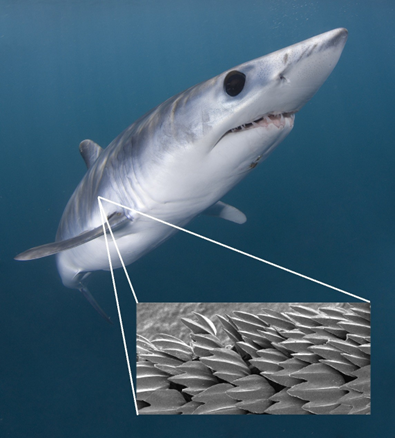The Problem:
In aerodynamics and hydrodynamics, controlling flow separation is a constant goal to achieve reduced drag and improved maneuverability. Traditional approaches to reducing drag involve smoothening surfaces or designing shapes aimed at promoting laminar flow. While effective, these solutions are static and do not adapt to changing conditions limiting their versatility. Dynamic solutions do exist but often require complex mechanisms or systems that add weight, cost, and points of potential failure. This highlights the need for a solution that is both passive and dynamic in its flow control and reduction of drag.
The Solution:
Researchers at the University of Alabama have developed a bio-inspired flow control surface that is modeled off the skin of mako sharks. When oriented in the direction of fluid flow, the scales on the surface are self-actuating and begin providing a passive control of flow separation that both reduces drag and improves maneuverability; in turn, making the air/watercrafts that implement this surface faster and more energy efficient. In addition, the scales can be 3D printed directly on to the surface.

Benefits:
·Improved aircraft performance and vessel design
·No additional mechanisms or outside power source required to enact flow control
·Potential application with wind turbines to enhance efficiency and reduce noise pollution